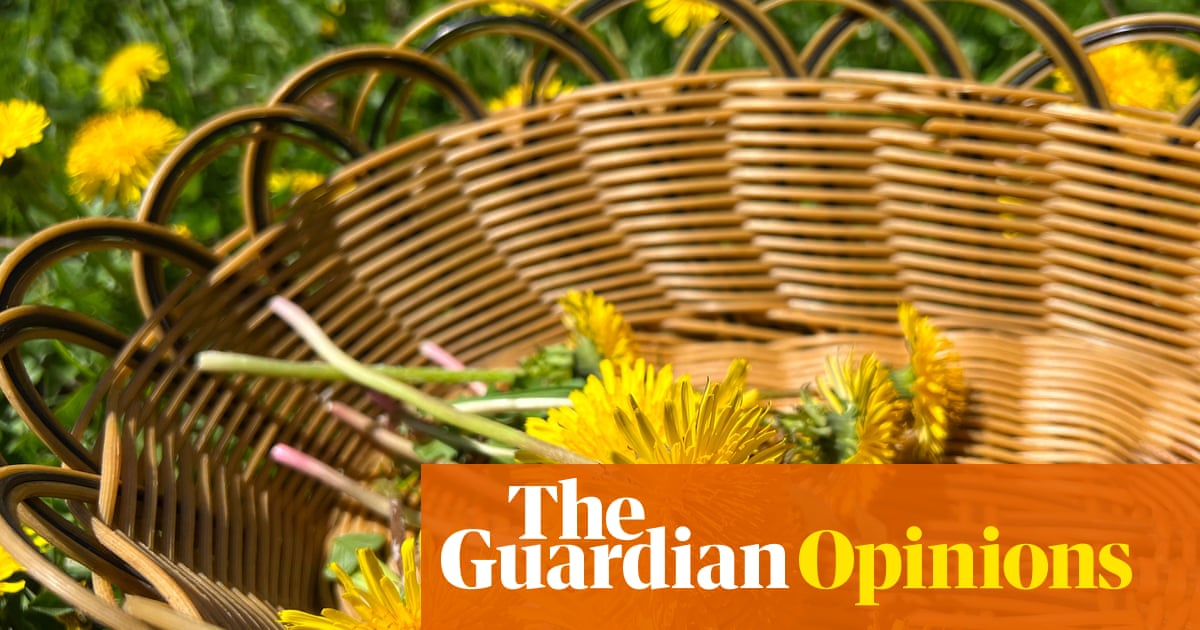Ihad a daughter during one of the bone-cold early months of this year, which means that my full-time job is now to produce a yield. Between the hours of dawn and midnight, with a few lactic minutes in between, I am a feeding machine for a new person.
And it is this, perhaps, that has led to my somewhat strange new eating habits. Pregnancy may traditionally be the time associated withcravings and aversions– the old cliches of sardines and jam, coal and creosote, bread and crackers. But here, in my postnatal feeding frenzy, I’m eating nettles by the handful. I am chomping on sticky weed. I have beenbiting the heads off dandelions(bitter – like really serious dark chocolate) and sucking the nectar from inside honeysuckle. This recent chlorophyll gala has, of course, coincided with England’s greatest month: May. Some of us love the look of May, some of us enjoy the smells. But for me, this year, the greatest heady, verdant, leaf-rich pleasure of my life is to eat May by the bushel.
The sheer amount of dilute dog pee I’m ingesting must be through the roof, I suppose, but I don’t really care. The number of edible plants and flowers in Britain right now is dazzling. My latest love is a plant called hedge garlic. Or, if you’re in the Midlands like me, Jack by the hedge (he sounds like the villain from a Grimms’ fairytale, or the kind of singer-songwriter we all regrettably slept with in our twenties).Alliaria petiolata, to give it its Latin name, is a wild member of the brassica family and has a thin, whitish taproot scented like horseradish, triangular-to-heart-shaped leaves and small white flowers. Friends, once you see it, it’s everywhere. You can eat it from towpaths and bike lanes and public parks if, like me, you’re not embarrassed to be seen bending down beside a lamp-post and pulling up your lunch.
If you don’t live in the sort of lush, woodland world where wild garlic covers the ground like concrete then hedge garlic is a fantastic alternative; the taste is oniony, garlicky and even a little mustardy. Of course, like absolutely everything that grows wild, it has a toxic lookalike in the form of lily of the valley. In fact, once you start Googling, pretty much everything edible seems to have a potentially dangerous twin, from mushrooms to flowers to roots. Buttercups are extremely poisonous, as are daffodils.
So please make sure you are referring either to an expert or a very well illustrated book before you start to chow down on your local undergrowth, and it’s a good idea to wash anything you pick in salt water to get rid of insects, as well as dog wee. But to be extra safe you could stick to these few, extremely identifiable friends: nettles (both the leaves and the seeds), dandelions, clover, sticky weed (that plant that people squished against your school jumper when you were little and is sometimes known as cleavers) and daisies. A friend of mine serves up slices of bread and butter topped with daisies to her small children as a mind-bending treat. She is yet to be burned as a witch.
Of course, I am in the incredibly privileged position of living somewhere in which food is, to a greater or lesser degree, widely available. I am able to boil rice and buy eggs and stock up on strawberries because I am a relatively wealthy woman living in a country that has not quite, as yet, cut itself off entirely from global food markets. I am not eating undergrowth out of necessity, and for this I am grateful every day.
Am I worried about the sewage in our rivers and the microplastics in our soil and the pesticides leaking into our ponds? Of course I am. But it is also true that Britain right now is a lush and emerald salad bar that I cannot hold back from. Pesto, bhajis, soups, salads, pizzas, pakoras, fritters, sauces – I’m putting these plants in everything. I’m literally mowing down the greenery around my house, munching through the stalks and leaves like a small, pink horse in a pair of plimsolls and I don’t care who sees. Because my iron levels are up, my skin is good and it’s all gloriously free.
Just imagine what I’ll be like when the apples and blackberries arrive.
Nell Frizzell is a journalist and author
